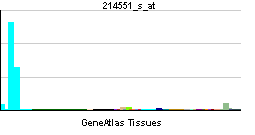Bibliografía científica relacionada
editar
- Stillwell R, Bierer BE (2002). «T cell signal transduction and the role of CD7 in costimulation.». Immunol. Res. 24 (1): 31-52. PMID 11485208.
- Yoshikawa K, Seto M, Ueda R, et al. (1991). «Molecular cloning of the gene coding for the human T cell differentiation antigen CD7.». Immunogenetics 33 (5-6): 352-60. PMID 1711009.
- Lee DM, Schanberg LE, Fleenor DE, et al. (1996). «The mouse CD7 gene: identification of a new element common to the human CD7 and mouse Thy-1 promoters.». Immunogenetics 44 (2): 108-14. PMID 8662072.
- Bevec T, Stoka V, Pungercic G, et al. (1996). «Major histocompatibility complex class II-associated p41 invariant chain fragment is a strong inhibitor of lysosomal cathepsin L.». J. Exp. Med. 183 (4): 1331-8. PMID 8666891.
- Leta E, Hou Z, Lederman L, Jung LK (1996). «Interaction between the extracellular domain of CD7 and concanavalin A: a clue to the identity of the ligand for CD7.». Cell. Immunol. 173 (1): 15-21. PMID 8871597. doi:10.1006/cimm.1996.0247.
- Lee DM, Patel DD, Pendergast AM, Haynes BF (1997). «Functional association of CD7 with phosphatidylinositol 3-kinase: interaction via a YEDM motif.». Int. Immunol. 8 (8): 1195-203. PMID 8918688.
- Steegmaier M, Yang B, Yoo JS, et al. (1999). «Three novel proteins of the syntaxin/SNAP-25 family.». J. Biol. Chem. 273 (51): 34171-9. PMID 9852078.
- Pace KE, Lee C, Stewart PL, Baum LG (1999). «Restricted receptor segregation into membrane microdomains occurs on human T cells during apoptosis induced by galectin-1.». J. Immunol. 163 (7): 3801-11. PMID 10490978.
- Rotem-Yehudar R, Galperin E, Horowitz M (2001). «Association of insulin-like growth factor 1 receptor with EHD1 and SNAP29.». J. Biol. Chem. 276 (35): 33054-60. PMID 11423532. doi:10.1074/jbc.M009913200.
- Rossi MI, Yokota T, Medina KL, et al. (2003). «B lymphopoiesis is active throughout human life, but there are developmental age-related changes.». Blood 101 (2): 576-84. PMID 12393702. doi:10.1182/blood-2002-03-0896.

